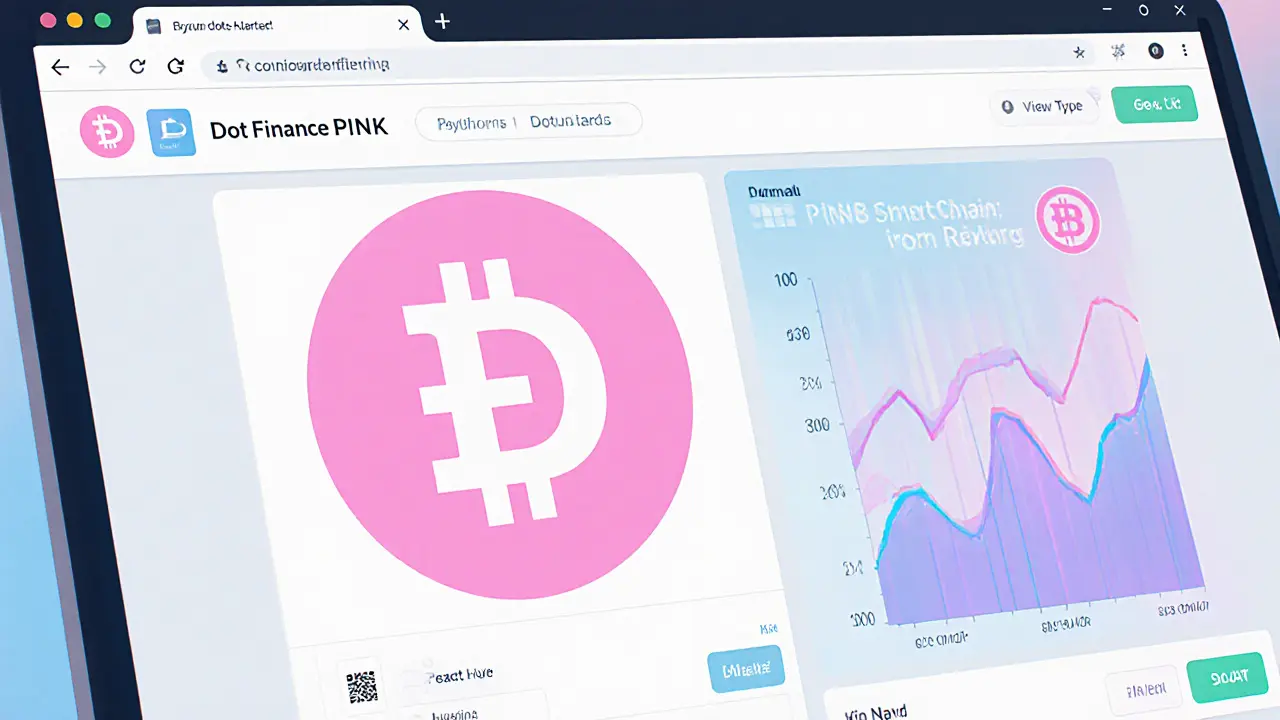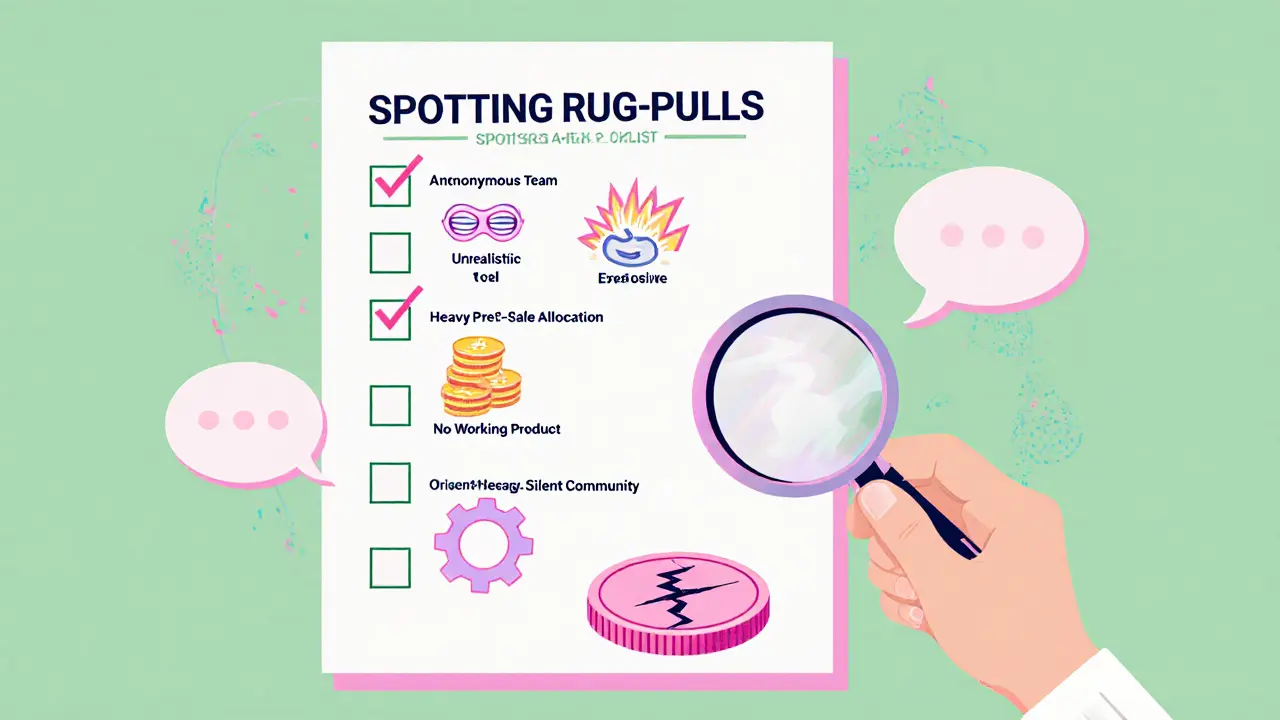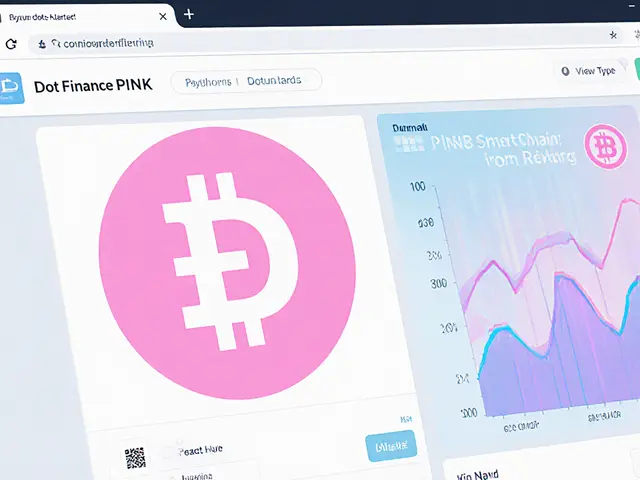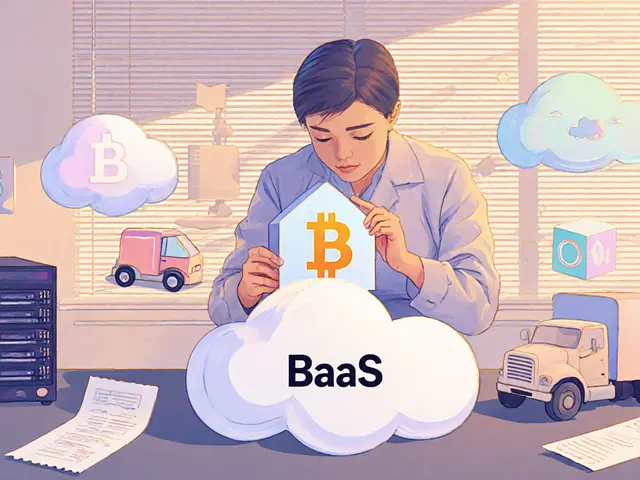Dot Finance (PINK) Crypto Coin Explained: History, Tokenomics, and Why It Failed

Crypto Project Risk Checker
Use this tool to evaluate the risk factors of a potential crypto project based on the warning signs identified in the article about Dot Finance (PINK). Each indicator is weighted based on historical rug-pull data.
0 = fully verified, 10 = completely anonymous
0 = no promises, 10 = >1,000% promises
0 = 0%, 10 = >20% allocated to pre-sale
0 = fully audited, 10 = no audit
0 = clear utility, 10 = no utility
0 = active community, 10 = no community activity
If you’ve ever scrolled through a crypto forum and seen the name Dot Finance (PINK) pop up, you probably wondered what it actually was and why it vanished from every exchange. Below you’ll get the full story - from its launch on the BNB Chain, through the hype of its IDO, to the hard facts that now label it a classic rug‑pull.
What is Dot Finance (PINK)?
Dot Finance (PINK) was a BEP‑20 token created as part of an Initial DEX Offering (IDO) on the BNB Smart Chain. The project presented itself as a decentralized finance (DeFi) protocol, but never released a working product, whitepaper, or any verifiable team information.
Launch and IDO Details
The token went live on BNB Smart Chain a high‑throughput blockchain built by Binance on June 18, 2021. It raised roughly $1.3million across three sale phases: a private/pre‑sale, a public sale, and a seed round. Prices ranged from $0.05 to $0.0825 per PINK token, and the total raised was reported at about $1million.
Initial hype drove the price to an all‑time high of $1.39039938 on June 23, 2021, a 1,645% jump from the IDO price. That spike, however, was short‑lived.
Technical Specifications
The contract address is 0x9133049fb1fddc110c92bf5b7df635abb70c89dc. It follows the BEP‑20 token standard on BNB Smart Chain similar to ERC‑20 on Ethereum specification, meaning it can be stored in any BEP‑20‑compatible wallet such as MetaMask (with the BSC network added).
Two conflicting data sources report slightly different total supplies: CoinGecko lists 120million PINK tokens, while CryptoRank.io lists 128.54million. The discrepancy does not change the bottom line - the token’s market cap is effectively $0 today.
Tokenomics Breakdown
According to CryptoRank.io, the allocation looked like this:
- Private/Pre‑sale: 15.95% (≈20.5million tokens) @ $0.065 each - $877,500 raised.
- Public sale: 1.79% (≈2.3million tokens) @ $0.0825 each - ~$100,000 raised.
- Seed round: 5.45% (≈7million tokens) @ $0.05 each - $350,000 raised.
Early investors therefore owned over 23% of the total supply before any community tokens were released, a red flag for many analysts. No clear utility for the PINK token was ever demonstrated - the promised staking rewards of 150% APY were never implemented.

Market Performance and Price History
After the June2021 peak, the price began a rapid decline. By August2025, CoinGecko listed the token at roughly $0.000092 USD, a 99.92% drop from its ATH. All major exchanges - Binance, KuCoin, and even the launchpad platforms - have delisted PINK, leaving it with zero liquidity.
Trading metrics paint a bleak picture:
- 7‑day price change (Oct2025): -1.60% vs. global crypto market +1.30%.
- Current market cap: effectively $0 (no circulating supply).
- Last on‑chain activity: a single token transfer on Jan142022.
Price‑prediction models still spit out optimistic numbers (e.g., a 1,448% rise to $0.009279), but those figures ignore the reality of zero trading volume and no exchange listings.
Why Dot Finance Failed - The Core Risk Factors
Multiple independent analyses converge on the same failure points:
- Anonymous Team - No verifiable founders or corporate entity; the team vanished after the IDO.
- Unrealistic ROI Promises - Marketing material highlighted a 1,645% jump to ATH, a classic pump‑and‑dump trigger.
- Excessive Early Allocation - Over 23% of tokens given to private investors, creating sell‑pressure once the market opened.
- No Working Product - Whitepaper and technical docs were never published; the promised staking platform never launched.
- Zero Community Support - Telegram, Twitter, and Discord channels fell silent by Q32021.
Regulatory bodies have cited projects like Dot Finance as examples of high‑risk securities. The U.S. SEC’s 2022 report warned that tokens promising >1,000% returns are likely to be classified as illegal securities offerings.
Spotting Similar Rug‑Pulls - Practical Tips
Understanding the Dot Finance collapse can help you avoid future scams. Keep an eye on these signals:
- Anonymous or hidden team - Search for LinkedIn profiles, corporate registrations, or audited code.
- Unrealistic profit claims - Anything promising >1,000% returns is a red flag.
- Heavy pre‑sale allocation - If a handful of wallets control >20% of supply, expect dumps.
- Lack of audited smart contracts - Verify the contract on BscScan and check for audit reports.
- No clear product roadmap - A vague or missing roadmap often means no real development.
Tools like CoinGecko crypto data aggregator that tracks price, volume, and project status and CryptoRank.io platform that evaluates IDO risk and token health can provide early warnings.

Current Status and What to Do If You Still Hold PINK
As of October2025, the token is listed as “inactive” on CoinGecko with a red warning icon. No reputable exchange lists it, and the contract shows no recent activity. If you still have PINK in a wallet, the only realistic options are:
- Transfer the tokens to a private address you control - this prevents accidental loss.
- Consider a token swap on a decentralized aggregator if a liquidity pool ever appears (unlikely).
- Accept the loss and use the experience as a learning case for future investments.
Because the token holds virtually no value, tax authorities in many jurisdictions treat it as a capital loss, which can offset gains on other crypto assets. Check local tax guidance if you want to claim that loss.
Comparison of Tokenomics: Dot Finance vs. Typical Successful DeFi Token
| Metric | Dot Finance (PINK) | Typical Successful DeFi Token |
|---|---|---|
| Total Supply | 120‑128million | ≈100million |
| Early Investor Allocation | ~23% (private + seed) | ~10% (team & advisors) |
| Utility | None confirmed | Staking, governance, fee rebates |
| Liquidity on Launch | Limited DEX pools | Multiple DEX & CEX listings |
| Current Market Cap | $0 (zero trading) | $1‑2billion |
Final Takeaway
Dot Finance (PINK) serves as a textbook example of how an unnamed team, inflated ROI promises, and a tokenomics design that favors insiders can lead to a complete collapse. By studying its timeline, you can sharpen your due‑diligence checklist and keep your crypto portfolio safer.
Frequently Asked Questions
Is Dot Finance (PINK) still tradeable?
No. The token has been delisted from all major exchanges and has essentially zero liquidity. Any trades would have to occur on a private peer‑to‑peer basis, which is highly risky.
Can I still claim a tax loss for PINK?
In many countries, a token that has become worthless can be reported as a capital loss. Check your local tax authority’s guidance to ensure you follow the proper documentation.
What warning signs did Dot Finance show before it collapsed?
Anonymous team, unrealistic ROI promises, huge early‑investor allocation, missing whitepaper, and sudden silence on social channels were all red flags that indicated a high likelihood of a rug pull.
How can I protect myself from similar DeFi scams?
Do thorough due‑diligence: verify team identities, read audited smart‑contract reports, examine token distribution, and avoid projects that promise extravagant returns with little substance.
Where can I find the contract address for PINK?
The BEP‑20 contract address is 0x9133049fb1fddc110c92bf5b7df635abb70c89dc. You can view it on BscScan, but remember there is no active market for the token.







Wow, what a wild ride this token had!!! It’s crazy how quickly hype can turn into a nightmare, especially when the team disappears like smoke, and the promised returns evaporate just as fast!!! Stay curious, keep learning, and don’t let the next rug‑pull catch you off guard!!!
Thank you for the thorough overview. It is essential for investors to conduct diligent research, especially when faced with anonymous teams and unrealistic promises. This analysis serves as a valuable educational resource.
The presented facts unequivocally demonstrate a classic case of market manipulation. Anonymity, disproportionate early‑allocation, and the absence of any verifiable product constitute grave red flags. Such projects undeniably warrant regulatory scrutiny.
Browsing through the chronology of Dot Finance feels like watching a suspense thriller that leads straight into a black hole where the only light is the fleeting flash of a 1,645% surge before the darkness settles in and the whole structure collapses under its own weight as investors scramble to exit only to discover every exchange door slammed shut and the developers vanished like ghosts leaving behind a trail of broken promises and an empty smart contract that now sits idle on BscScan like a museum exhibit of what not to do in the DeFi arena.
Interesting read! The lack of a clear roadmap really stood out to me, and it’s a reminder that a solid product is the backbone of any token’s longevity. Keep sharing these deep dives; they help the community stay informed.
🤔 This is a classic case of hype over substance. The token’s lifespan was about as short as a coffee break‑but at least we learned something. Good job on the write‑up! 🙌
Thanks for the detailed breakdown. It’s a sobering reminder to stay vigilant. Let’s hope more people take note before jumping in.
Alright, let’s unpack what went wrong with Dot Finance and turn it into a learning checklist for anyone eyeing a new DeFi launch.
First, the team stayed completely anonymous. In the crypto world, that’s a massive red flag because accountability disappears the moment the price starts to tumble.
Second, the tokenomics heavily favored early investors – over 23% of the supply was allocated before anyone else even got a chance to buy, creating inevitable sell pressure once the public got in.
Third, the promised 150% APY staking never materialized. When a project claims such astronomical returns without showing any code or audit, you should assume it’s smoke and mirrors.
Fourth, there was no whitepaper, no roadmap, and no auditable smart‑contract. The contract address is live on BscScan, but there’s zero activity beyond a solitary transfer in early 2022.
Fifth, community channels went silent by Q3‑2021. A thriving project usually has a bustling Discord or Telegram where developers interact with users regularly.
Sixth, the marketing was all hype, flaunting a 1,645% price jump within days of the IDO. That kind of rapid, unsustainable price action is classic pump‑and‑dump behavior.
Seventh, regulatory bodies have already flagged similar schemes as potential securities violations. The SEC’s 2022 report specifically warned about tokens promising returns above 1,000%.
Eighth, liquidity was practically non‑existent. Even after the price peaked, there were no significant DEX pools, making it impossible for holders to exit without massive slippage.
Ninth, the token got delisted from all major exchanges quickly, confirming that the market had lost confidence and that there was no longer any venue to trade it.
Tenth, the only realistic recourse for remaining holders is to claim a capital loss on taxes, which, while mitigating some financial pain, does not bring back the lost value.
In short, if you spot any of these warning signs – anonymous team, massive early allocation, unrealistic ROI promises, missing product, silent community, and zero liquidity – walk away. Use this case as a template for your due‑diligence checklist and protect your portfolio.
Deep dive appreciated-I’d add that the token’s liquidity pool dynamics resembled a dead‑weight loss function, essentially a zero‑order system lacking any meaningful market depth, which is a hallmark of rug‑pull architecture.
The warning signs were obvious.
This analysis is concise and well‑structured; thank you.
Wow, what a cautionary tale! 😲 It really hits home how quickly dreams can turn into losses. Stay safe out there! 🙏
Honestly, anyone who bought into PINK without digging deeper must have been blinded by the glitter of inflated promises-what a spectacular example of chasing rainbows while ignoring the ground beneath!